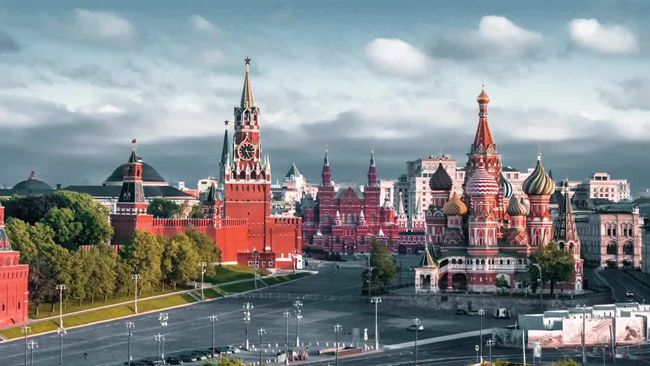On the afternoon of December 7, local time, the southwest section of the third transfer loop of Moscow metro, the first subway project in Europe to be built by A Chinese company participating in the construction of China Railway Construction Corporation, officially opened. Russian President Vladimir Putin attended the opening ceremony via video link, announcing the opening of 10 stations of the third transfer loop of the Moscow metro.
In May 2014, witnessed by Chinese President Xi Jinping and Russian President Vladimir Putin, China and Russia signed a memorandum of Cooperation on infrastructure construction in Moscow, laying a solid foundation for the implementation of the project. In January of 2017, China railway construction bid third transfer to Moscow subway loop line southwest section of the project, it is the world's longest subway loop line - 70 km of the Moscow subway third transfer part of the loop, the 5.4 km blocks, contain Amy, stands, m QiuLin street station, Werner street station 3 station and article 9 of shield tunnel construction tasks, This is the first time for Russia to introduce a Chinese company in the field of subway construction. In the construction of these projects, CRCC has realized the clustering of Chinese culture, Chinese solutions, Chinese technology, Chinese equipment and Chinese capital to go global, which has become a vivid example of China-Russia cooperation in infrastructure.

At present, Moscow metro passenger volume ranks first in Europe and second in the world. The average distance citizens travel by subway every day is about 14.5 kilometers. Moscow metro is not only a convenient means of transportation for citizens, but also known as the "underground art palace" worldwide. When you walk into the Metro station on Michurin Street, you can see many Chinese elements, such as red columns, a group of longevity patterns and auspicious clouds, which have become a new landmark of China-Russia friendship and show the flourishing cross-cultural landscape of the Belt and Road initiative.
"Like Chinese cities, Moscow is building subways on a massive scale." Maxim Riksutov, deputy mayor of Moscow and head of Moscow's transport and road infrastructure development department, said that since 2011, the city government has built new subway stations for nearly 4 million Muscovites within walking distance of their homes.
About 340,000 people live in the southwest section of the third transfer line of the Moscow metro, and more than 100,000 people live within walking distance of the new station. The southwest loop will cut local residents' daily commute time by 40 percent. "The subway finally arrived at my door!" Yelena, 28, a psychotherapist from Russia, is a five-minute walk from the newly built Amini station. When the subway opened, it took her about 10 minutes to meet friends who lived near the Werna Street station, saving her nearly 20 minutes of travel time.
In the 1950s and 1960s, Soviet subway experts helped plan and design China's first subway, The Beijing Subway Line 1, and the predecessor of CRCC was the main force behind the construction of the Railway Line 1. By the end of 2020, 40 cities on the Chinese mainland had urban rail transit, with 7,978.19 kilometers of lines in operation, ranking first in the world. Now, the subway built to the former "master" home, witness the rapid development of new China.

Through the successful implementation of the Moscow metro project, CRCC has established its brand in Russia, and has successively entered the fields of design consulting, rail transit, general contracting of housing construction, highways, cross-border ropeway and so on. The belt and Road Initiative and the Eurasian Economic Union have yielded fruitful results in synergization and cooperation.
During four and a half years of construction, CRCC developed five shield machines that can withstand a low temperature of minus 30 degrees Celsius. They were named after the five daughters in the popular Russian TV series daddy's Girls, maria, Dahlia, Galina, Polina and Yevgeny, who are very popular among Chinese and Russian people. The project department also compiled the first Chinese-Russian bilingual subway construction professional manual of a Chinese enterprise, innovatively applied a number of technologies such as reinforced concrete box receiving technology, and realized the integration of Chinese and Russian cultures and technologies.
With the joint efforts of Chinese and Russian builders, the project department has overcome the impact of COVID-19, overcome a number of world-class problems such as the century-old railway in operation, old subway stations and ancient river channels with abundant water, and achieved 9 times of safe initiation, 9 times of safe reception, and 10 times of crossing major risk sources. It has created a number of construction records in Russia, such as 3 shield machines in 17 days and daily excavation of 25 rings and 35 meters.

